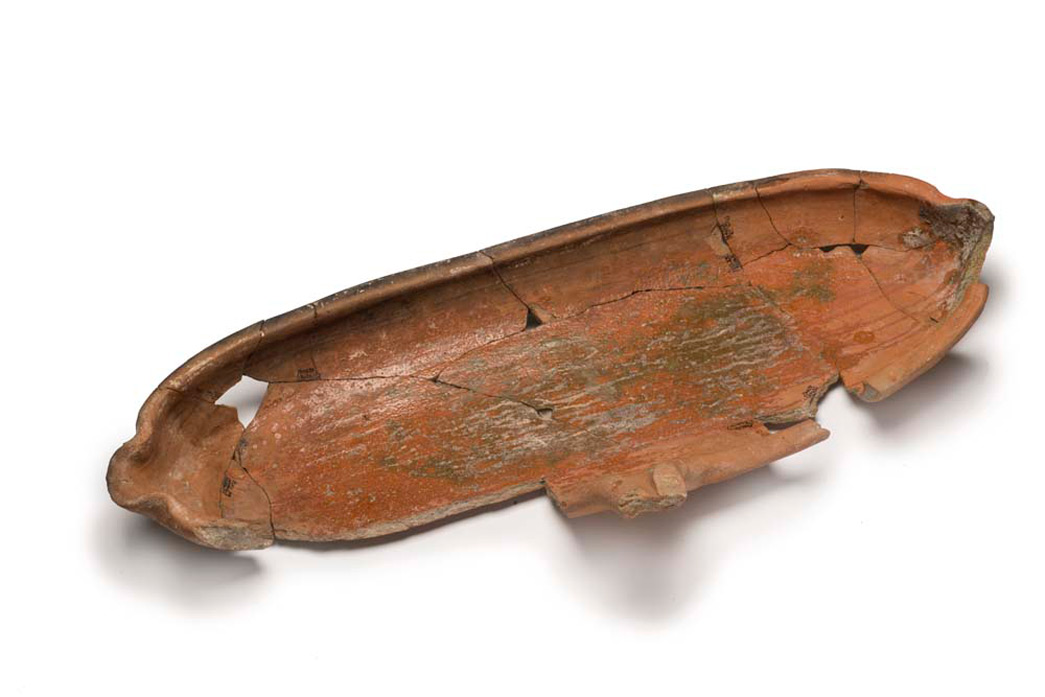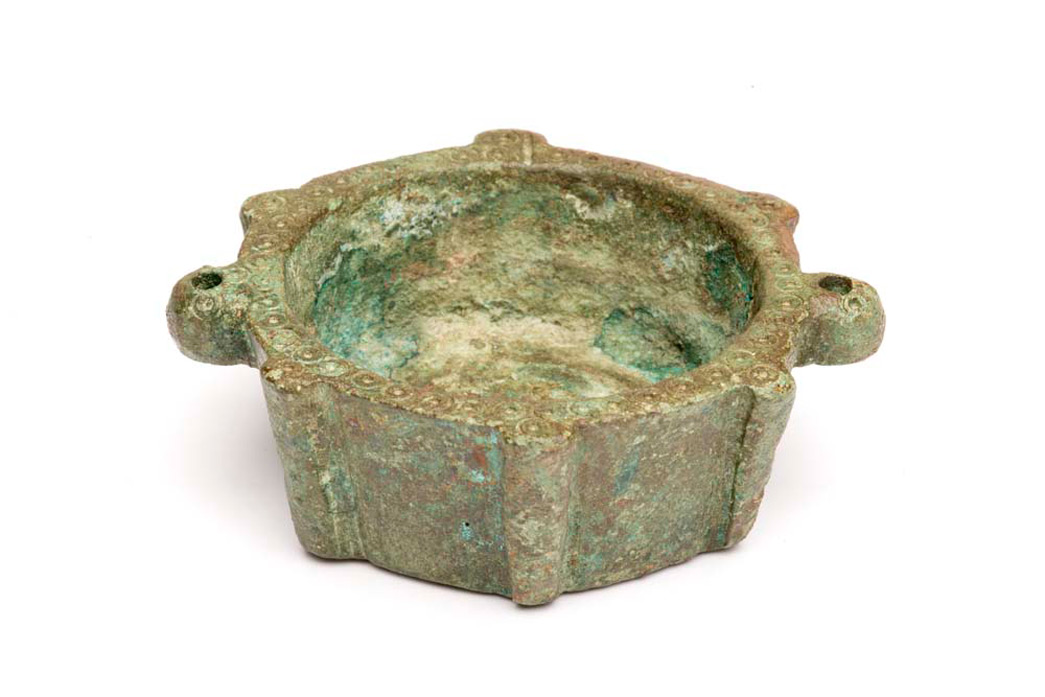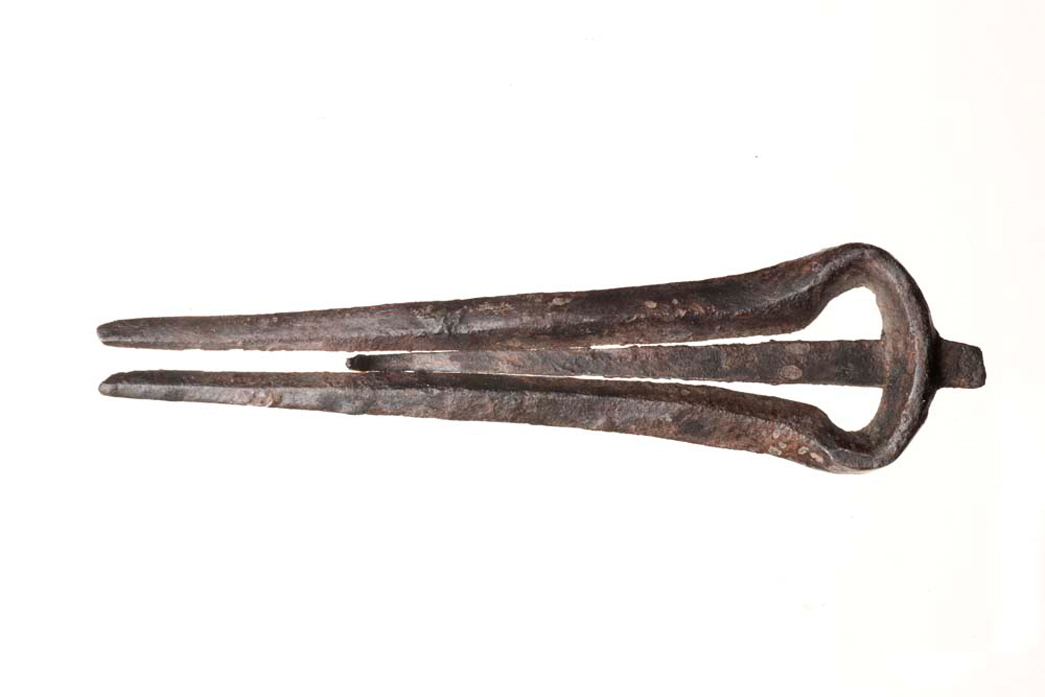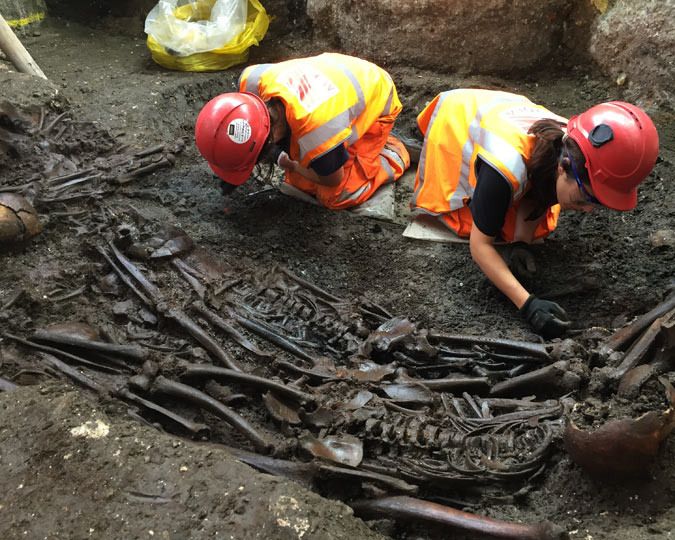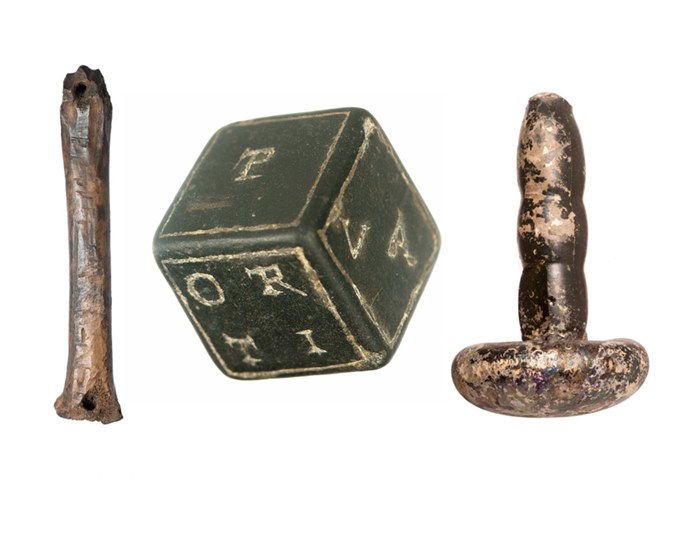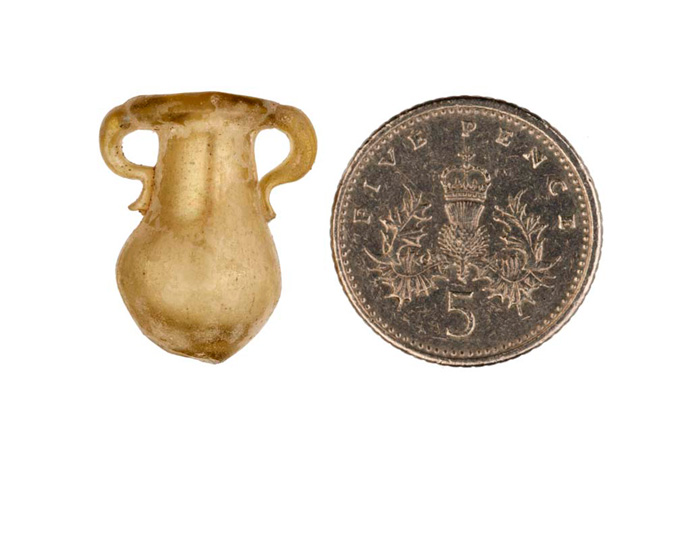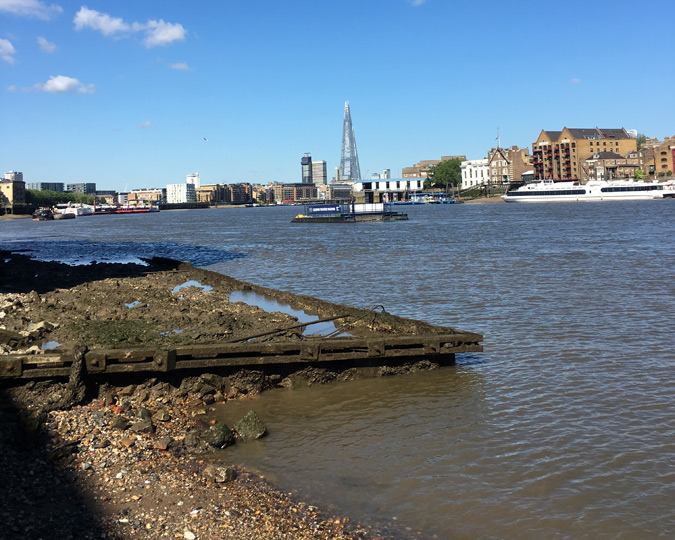Searching through the shelves at the museum’s Archaeological Archive can easily lead to seeing items that you haven’t noticed before. Sometimes it’s the strange stuff that catches your eye - the odd-looking artefacts, where you can't guess what they were used for. Here are three from the 13th century that we’ve recently enjoyed rediscovering.
Guess what each object was used for, then click on the letter i at the bottom of the image to see the answer.
This ceramic artefact was first excavated in pieces in 1979 at the site of the former General Post Office at Newgate Street. When the pieces were reconstructed they formed a large oval vessel, made from 13th century London-type pottery. Although missing a few bits, you can easily see the two pinched pouring lips at both short ends. There's also a break in the middle section, where a handle would have been. The inside is covered with lead glaze and you can just about make out the dark patch of soot opposite the handle side. This is a clue as to what this object is - a drip tray for collecting the juices beneath a spit-roast! It worked just like health grills today, channeling away the fat and liquid from turning meat to keep the fireplace clean.
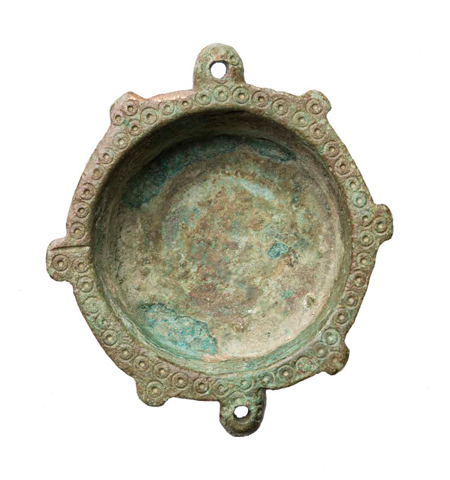
Our next object caught our attention because of the simple but lovely ring and dot decoration around its rim. It’s not that big, fitting snugly into the palm of your hand. It's 52mm in diameter, weighs 117 grams and is made from copper. Discovered whilst excavating the infirmary hall of the Hospital of St Mary Spital, the object is a small cup weight dating to the mid-13th century. Its exact purpose however is a bit of a mystery. It looks like it might have been part of a set of nesting weights for measuring small quantities, the ring and dot motif possibly indicating the weight intended. However, my favourite suggestion, based on the context of its discovery in an infirmary, is that it may have been used to weigh medicinal ingredients to heal the sick!
Our final object is from the end of the 13th century, and although it's made from iron it is in great condition. The main part is one strip of iron wrapped around to form a U-shaped frame. The flat central strip of iron (the tongue) is then hammered or welded into the thickest part of the frame with its tip slightly bent upwards. It’s only 66mm long and is meant to be held in one hand with the frame’s pointed ends sitting between the person’s teeth. The iron tongue is then plucked with the other hand to create a twang sound that using the mouth as an echo chamber, creates a note which can be raised in pitch by changing the position of lips, tongue and cheek. This simple ancient folk instrument is called a ‘trump’, though is more commonly known as a ‘Jew’s Harp’ (probably deriving from ‘Jaw’s Harp’). It was introduced to Europe during the Crusades from South-East Asia. The example here was excavated in 1973 at Custom House and is one of the few complete ones within the Museum of London’s collection.
Find out more about the Archaeological Archive, the largest in the world, and check out the events we hold which can take you inside to view the artefacts for yourself.
Love interesting archaeological objects? Want to get updates about the city's past straight to your inbox? Sign up for our free Archaeology newsletter.








